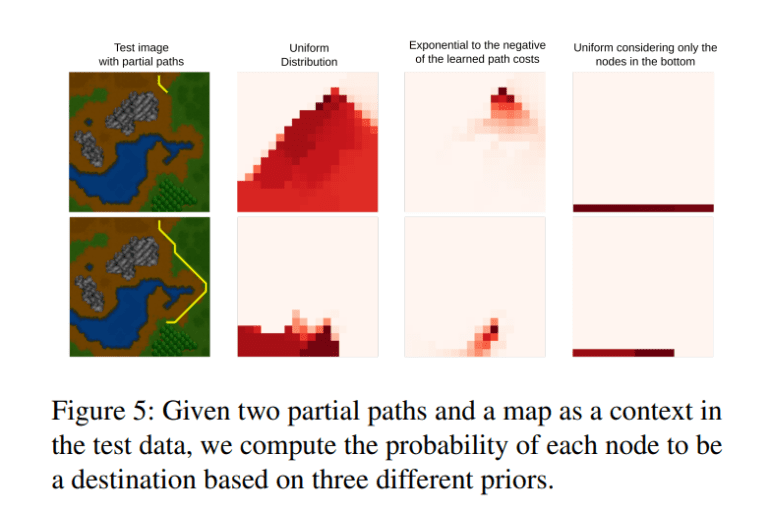- DataSP introduces a novel Differentiable all-to-all Shortest Path algorithm.
- It encodes latent costs from observed trajectories into shortcut frequencies.
- Leveraging the Floyd-Warshall algorithm, it facilitates comprehensive insights into latent costs within graph architecture.
- DataSP overcomes challenges of non-informative gradients and aligning solutions with optimal demonstrations.
- This methodology streamlines learning latent costs, predicts likely trajectories, and enhances decision-making in traffic management and urban planning.
Main AI News:
In contemporary urban planning and traffic management, the quest to discern optimal routes from contextualized demonstrations represents a pivotal frontier. Building upon preceding research endeavors, this approach hinges on the premise that individuals strive to optimize latent costs while traversing from one location to another.
Factors like travel duration, comfort, toll charges, and geographical distance invariably influence these hidden costs, profoundly shaping individuals’ navigation choices. Consequently, unraveling and comprehending these latent costs not only unveils the intricacies of decision-making mechanisms but also opens avenues for refining traffic management by preempting congestion and furnishing real-time navigation counsel.
While inverse reinforcement learning has gained traction for deciphering the costs linked with diverse routes or transitions from observed trajectories, conventional techniques often oversimplify the learning process by assuming a linear latent cost structure, a facet that may fall short of encapsulating real-world complexities. Recent strides, however, witness the fusion of neural networks with combinatorial solvers to facilitate end-to-end learning from contextual cues and combinatorial solutions. Yet, scalability hurdles loom large, especially when confronted with copious trajectories.
To surmount these obstacles, a pioneering approach has surfaced in a recent investigation. This innovative methodology endeavors to glean latent costs from observed trajectories by encoding them into shortcut frequencies. Leveraging the Floyd-Warshall algorithm renowned for its prowess in resolving all-to-all shortest path quandaries in a solitary iteration grounded on shortcuts, their approach heralds a transformative leap. By effecting differentiation through the Floyd-Warshall algorithm, the proposed framework empowers the learning endeavor to encapsulate substantial insights about latent costs within the graph architecture in a singular sweep.
Nonetheless, navigating through the Floyd-Warshall algorithm’s differentiation realm presents its own share of hurdles. Principally, gradients derived from path solutions often lack informative value due to their combinatorial essence. Moreover, the exact solutions furnished by the Floyd-Warshall algorithm may necessitate alignment with the presumption of optimal demonstrations, mirroring human behavioral patterns.
In a bid to tackle these challenges head-on, the researchers introduce DataSP, a groundbreaking Differentiable all-to-all Shortest Path algorithm poised to revolutionize the landscape. Serving as a probabilistic and differentiable adaptation of the Floyd-Warshall algorithm, DataSP incorporates seamless approximations for pivotal operators, thereby facilitating informative backpropagation through shortest-path computations.
The envisaged methodology not only streamlines the process of learning latent costs but also emerges as a potent tool for forecasting probable trajectories and deducing prospective destinations or forthcoming nodes. By seamlessly integrating neural network architectures with DataSP, researchers stand to unearth nonlinear representations of latent edge costs predicated on contextual cues, thereby engendering a holistic comprehension of decision-making dynamics in traffic management and urban planning.
Conclusion:
DataSP’s innovative algorithm signifies a paradigm shift in traffic management and urban planning. By offering a streamlined approach to learning latent costs and predicting trajectories, it opens avenues for more efficient decision-making processes and better traffic flow management in the market. Businesses in transportation and urban development stand to benefit significantly from the insights provided by DataSP, enabling them to optimize routes, mitigate congestion, and enhance overall operational efficiency.

